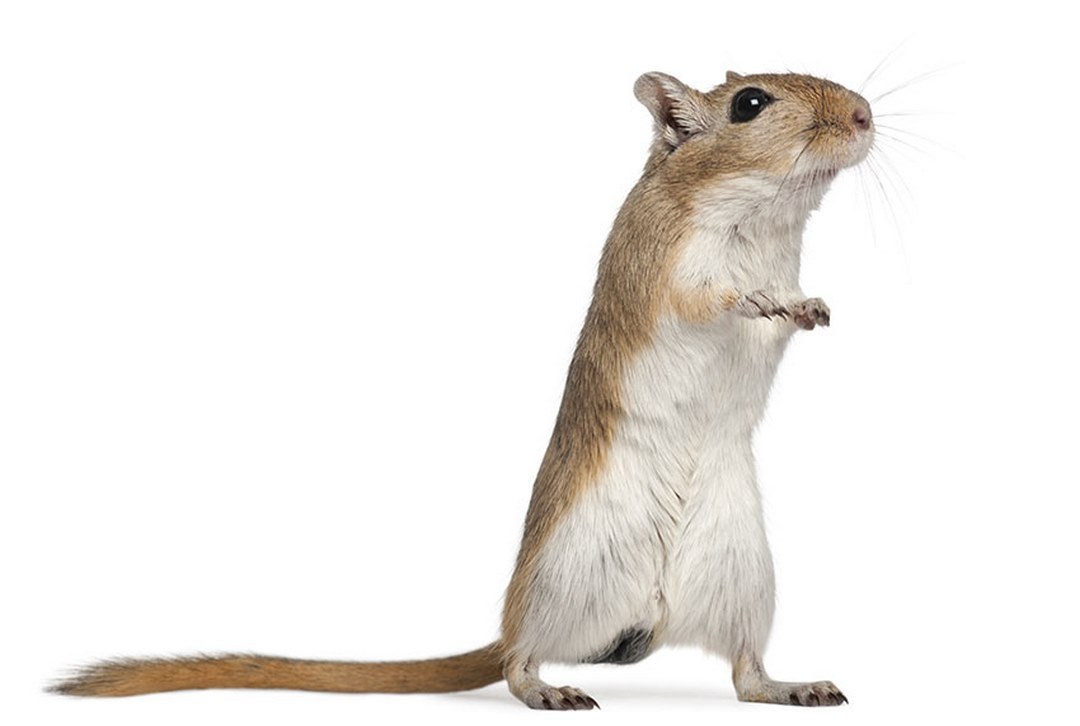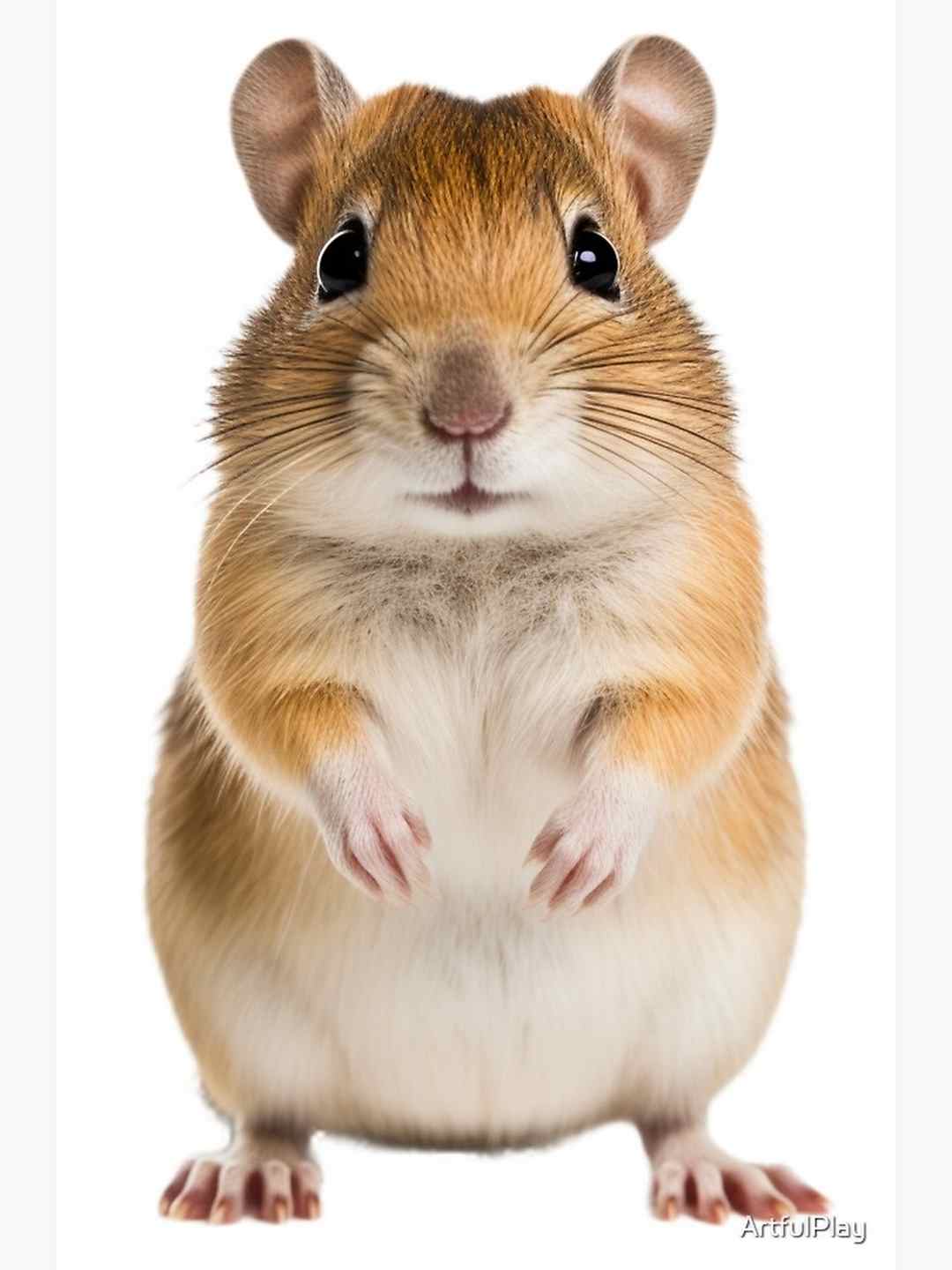Gerbils are burrowing rodents native to desert regions in Asia, Africa, and India. Among the many species, the Mongolian gerbil is the most popular as a pet. Known for their friendly, active, and gentle nature, gerbils enjoy digging and creating elaborate burrows. They are intelligent animals that thrive on play and interaction. Social creatures by nature, gerbils communicate using olfactory signals, foot drumming, and a variety of vocalizations.

Popularity and Care
Gerbils have gained popularity as pets due to their relatively easy care and minimal odor. However, they do have specific needs to ensure their well-being and happiness. Given their social nature, gerbils should ideally be housed in pairs or groups. On average, a gerbil lives for about 3 to 4 years.
As diurnal animals, gerbils are active both day and night. Their quick movements make them unsuitable pets for young children, and any child handling them should be supervised by an adult.
Medical Needs
Like all pets, gerbils require regular veterinary examinations. They can become ill, and prompt attention is crucial, especially since illnesses can escalate quickly. It is advisable to have newly adopted gerbils checked by a veterinarian knowledgeable about their care within two weeks of adoption. Many health issues stem from misinformation, making that first visit vital in preventing potential mistakes. While gerbils don’t need routine vaccinations, an annual check-up and parasite screening are recommended.
Gerbils are susceptible to various health problems, often only apparent when the illness is severe. Being observant of your gerbil’s normal behavior can help identify health issues early. Common signs of illness include:
- Seizures or signs of epilepsy (often triggered by environmental changes or stress)
- Hair loss or redness on the face
- A rough or unkempt coat
- Lumps or bumps, particularly around the scent gland
- Changes in appetite, such as not eating or drinking, or increased drinking
- Noticeable weight loss or gain
- Unusual behavior
- Diarrhea
- Discharge from the nose or eyes
- Difficulty breathing
If you notice any of these symptoms, contact your veterinarian without delay.
Diet
Gerbils are omnivorous, consuming both plant and animal-based foods. Specialized pelleted or block diets formulated for gerbils are nutritionally complete, containing 18-20% protein. Each gerbil should receive about one teaspoon of this food daily. Avoid seed mix diets, as they tend to be high in fat and encourage selective eating, leading to nutritional imbalances.
In addition to their primary diet, fresh foods can enhance their nutrition. Offer small portions of fruits and vegetables such as peas, broccoli, carrots, apples, bananas, oats, pumpkin, basil, and lean meats. It’s essential to avoid high-fat foods, like seeds and excessive nuts. Scatter some food across the bedding to encourage natural foraging behaviors and minimize conflicts among gerbils. A heavy ceramic food dish and a water bottle with a sipper tube should provide water, ensuring a continuous supply of fresh water is available.
Gerbils tend to hoard food, so it’s common to find hidden stashes when cleaning their enclosure. Be sure to remove any old or stale food daily.
Housing

Gerbils thrive in social groups and should not be housed alone; it’s best to keep them in same-sex pairs or groups. Littermates usually coexist well. When introducing new gerbils, take your time to ensure a gradual acclimatization, which can take several weeks.
Cage Requirements: A suitable gerbil cage should be spacious and well-ventilated. Aquariums with secure wire mesh tops are ideal, as they allow for deep bedding for digging. Avoid plastic cages due to chewing tendencies and poor airflow, and steer clear of wire cages since gerbils can kick out bedding and get their legs stuck.
The minimum recommended size for a single gerbil is a 20-gallon tank with a height of at least 18-20 inches. For better comfort, aim for dimensions of at least 12 inches x 24 inches x 12 inches. Since gerbils often stand on their hind legs, the floor should be solid, and the cage height should accommodate this behavior, as an adult gerbil can reach around 5 inches tall. Adjust the habitat size according to the number of gerbils you have.
Location: Place the cage in a quiet area while keeping it close to social activities in the home. Avoid direct sunlight, drafts, and proximity to other pets like dogs and cats. Gerbils are sensitive to high-frequency sounds (e.g., TVs, computers, vacuums), so housing them away from noisy environments is advisable.
Given their adaptation to dry climates, gerbils require low humidity (35-50%) and a temperature range of 60-70°F. Ensure there’s a light and dark cycle in their habitat.
Bedding: Line the cage with unscented, absorbent paper-based bedding. Avoid wood shavings. Depth is crucial; provide at least 6-8 inches of substrate for burrowing.
A nest box, whether purchased or homemade, should have multiple openings and a dark interior for sleeping and food storage. Acceptable materials include cardboard boxes, flowerpots, or sections of PVC pipes (no less than 5 inches in diameter).
Additionally, offer nesting materials such as shredded paper, egg cartons, and empty toilet rolls. Avoid materials with thin strands, like cotton, as they pose choking hazards.
Cleaning
Gerbils have low cleaning needs due to minimal urine production and hard, dry fecal pellets. Remove soiled bedding, droppings, and stale food daily, and clean food and water dishes regularly. Because gerbils rely heavily on scent, a complete cleaning can be stressful; therefore, spot clean often and keep some non-soiled bedding to retain their familiar scent. Use warm, soapy water for cleaning, rinsing thoroughly, and perform a deep clean every one to two weeks.
Exercise
Active gerbils require exercise wheels to run in without arching their backs. An 8-9 inch wheel with solid flooring is recommended. Avoid using exercise saucers.
Provide a designated out-of-cage exercise area, using a playpen or a secure space for bonding. Never leave gerbils unsupervised during playtime. Avoid exercise balls, as they can cause stress or injury.
Cage Accessories
Gerbils need shaded, secluded areas to sleep and hide. Small boxes, igloos, or flowerpots can serve as hiding spots.
Create different levels in the cage using cardboard tubes, ladders, tunnels, and PVC pipes for climbing, running, and hiding opportunities.
Chewing is essential for gerbils to maintain their dental health, so offer a variety of chewable items like untreated hardwood, wood blocks, twigs, hay cubes, and coconut shells. Avoid soft plastic materials.
Include a rough surface object, like a stone, to help wear down their nails and provide structure for burrowing.
Sand Baths
Provide a sand bath for gerbils to maintain cleanliness. Never bathe them in water. A shallow tray works well for sand baths, using sand specifically designed for gerbils (not dust or powder). Follow the product instructions for sand depth, usually around ½ to 1 inch. Clean the sand bath weekly or as needed.
Handling Your Gerbil

Daily handling is crucial for taming and socializing your gerbil. Approach them calmly and confidently, as gerbils can startle easily. If frightened, they may thump their hind feet or nip.
To help your gerbil become accustomed to handling, start with hand-feeding small treats. Once they are comfortable, gently scoop them up with both hands. After taming, you can allow them supervised playtime outside their cage. Always check the area for hazards to prevent accidents, as gerbils have poor eyesight.
Important: Never grab, hold, or pull on your gerbil’s tail, as this can lead to fur loss or serious injury, requiring possible amputation.
By providing proper care, a suitable environment, and social interaction, you can ensure your gerbil thrives as a cherished pet.


